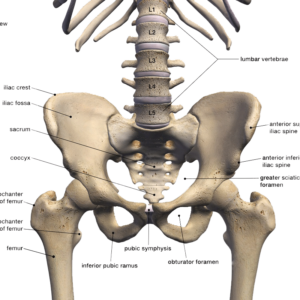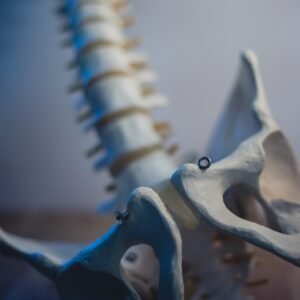How to Correct the Pelvic Tilt, many people search this question but here they have end up their search by visiting here. we Having good posture is essential to overall health and well-being. Pelvic tilt can significantly impact posture, often leading to musculoskeletal problems. In this article, we will discuss Pelvic tilt- How to Correct the Pelvic Tilt. We’ll also explore how physical therapy and other modalities can help with pelvic tilt correction.
Here you shall understand why correcting pelvic tilt is important for long-term stability in your body’s structure and improved comfort levels throughout your daily activities. The high pelvic tilt is a compensatory mechanism that can influence and lessen the apparent level of overall sagittal malalignment, making pelvic tilt (PT) a significant criterion in diagnosing spinal deformity. A pelvic tilt is a movement that helps improve your posture, flexibility, and mobility. It’s an exercise that can be done at any level, from beginner to advanced, and is used to help correct muscular imbalances and improve core stability.
Read more about lower limb problems Grades of Osteoarthritis.
Table of Contents
How to Correct the Pelvic Tilt
The pelvic tilt is a shift in the position of the pelvis relative to the spine. The pelvic tilt is important for people suffering from back pain and those eager to improve their posture. The term “pelvic tilt” describes the movement of the pelvis concerning the whole body around a frontal horizontal axis and sagittal plane.
The pelvic tilt is a common imbalanced posture when the pelvis does not sit in its natural, upright position. It creates an altered spine alignment that places undo stress on joints and weakens important core muscles. Poor pelvic tilt can contribute to several physical health issues, ranging from lower back pain to tight hips and leg discomfort. Thankfully, correcting pelvic tilt through targeted exercises is straightforward if done properly! Here we will discuss How to Correct the Pelvic Tilt. Continue reading on the topic of How to Correct the Pelvic Tilt.
To understand How to Correct the Pelvic Tilt, let’s take a look at the anatomy of the pelvis first.

Anatomy of the Pelvis
The pelvis comprises two hip bones (the ilium, ischium, and pubis), which join together in the front at the pubic symphysis. At the back, these two hip bones are connected to two sacrum bones and five fused vertebrae known as the sacral spine. This entire structure also connects with other bones throughout the body, such as the femur (thigh), lumbar spine (lower back), sternum (breastbone), ribs, scapula (shoulder blade), humerus (upper arm), carpals (wrist), metacarpals (palm), phalanges (fingers), tarsals(ankle). These connections make up a complex system of muscles and ligaments that stabilize your pelvis while allowing it to move in all directions.
Measurement of Pelvic Tilt
Measurement of pelvic tilt can be done in numerous ways, such as:

- A line drawn from the middle of the sacral endplate to the vertical axis and the center of the bifemoral heads forms the angle that represents pelvic tilt (PT), a position-dependent feature. The anterior pelvic tilting angle is 13.0-4.9°, while the posterior pelvic tilting angle is 8.9-4.5°.
- Drawing a line through the symphysis pubis allows one to quantify the anterior and posterior pelvic tilt; the lumbosacral angle is located around this horizontal line. Standing upright, the angle is typical if it is considered to be between 50 and 60 degrees.
- By positioning one arm over the posterior superior iliac spine and symphysis pubis, a pelvic inclinometer can also measure the pelvic tilt angle. Pelvic tilt is normal if it is within 30 degrees while standing.
Types of Pelvic Tilt
Anterior Pelvic Tilt
The ‘pelvis’ rear turns upward on the femoral heads, while its front rotates forward. An anterior pelvic tilt, which can be caused by inactivity or a client’s sitting position, can have negative effects on the spine in addition to other pelvic tilt issues.
Muscle Control
- Tight hip flexors
- Weak gluteus Maxims and abdominal muscles.
- In this instance, it is known as a lower cross syndrome or pelvic cross syndrome.
Posterior Pelvic Tilt
The front of the pelvis tilts up and back on the femoral heads, and the pelvic floor rotates beneath the body. Similar to anterior pelvic tilt, the spine is in a susceptible posture that may benefit from corrective training.
Muscle Imbalance
- Tight hamstrings
Lateral Pelvic Tilt
Every pelvic tilt is different. When the pelvis tilts so much to one side that one hip is higher than the other, this is referred to as a lateral pelvic tilt. Unilateral muscular imbalances occur throughout the body as a result of this.
Muscle Control
- This tilt is frequently impacted by the erector spinae muscle group, which needs to be addressed in every case.
- Weak hip abductors.
Impact of Pelvic Tilt on Posture
The pelvic tilt has a significant impact on one’s posture. When the pelvis is in a neutral or upright position, the body can maintain an erect posture and balance. When the pelvis is tilted forward, it causes a shift in the spine’s alignment, leading to poor posture, pain, and discomfort. Poor posture can also strain other body parts, such as the lower back and neck. It may also cause breathing issues because chest muscles are pulled into an unnatural position.
When the pelvic tilt is too extreme, it can cause muscle imbalances, leading to further postural problems and pain. For example, when the anterior tilt (or forward tilt) of the pelvis is excessive, it can cause over-tightening of certain muscles such as hip flexors, hamstrings, and abdominal muscles, as well as under-active glutes and lower back muscles. This imbalance puts more strain on areas of the body that are not meant to be used during activities such as standing or sitting for long periods, eventually leading to fatigue and postural issues like rounded shoulders or lordosis (excessive curvature in the lower back).
Long-term effects of pelvic tilt include chronic low back pain, shoulder injuries due to poor alignment, hip injuries due to misalignment, neck pain due to tightness in chest muscles, headaches resulting from tension in the neck/shoulder area, restricted joint range-of-motion at hips/shoulders/spine; We can prevent all of these symptoms with proper exercise and stretching programs designed to reduce excessive tightness while increasing muscular strength and endurance around problematic regions. Furthermore, correct posture should always be maintained during physical activity so that proper form is achieved and maintained throughout each exercise session.
A balanced pelvic tilt has numerous benefits for one’s overall health, including improved posture and less risk of injury due to incorrect alignment or muscular imbalances caused by excessive anterior tilt. How to Correct the Pelvic Tilt, Proper exercise programs tailored specifically for individuals’ needs can help restore balance while providing long-lasting improvements in mobility and comfort associated with postural stability. Additionally, We should always maintain correct posture during daily activities such as sitting or standing for extended periods to avoid complications related to poor spinal alignment.
Pelvic Tilt Correction Exercises
Pelvic tilt correction exercises are a great way for individuals to reduce back pain, improve their posture and promote better overall spinal health. These corrective exercises involve consciously engaging the abdominal muscles to pull the hips down and forward, which can help relieve pressure on the lower back and improve spinal alignment. While these exercises can be done lying down or standing up, they are generally most effective in a four-point kneeling position.
The next step of question How to Correct the Pelvic Tilt is strengthening any weak or underactive muscles around the hips to support proper alignment of the pelvis when in motion during activities like walking and running. Gluteal activation exercises, such as bridges and clamshells, are great for strengthening the glutes. It will help support an optimal pelvic tilt position – especially during running, where more power needs to be generated from these muscles. Strengthening exercises for other muscles around this area, like transverse abdominals and multifidus, are also beneficial as they provide stability and control in postures like standing and sitting while helping reduce muscular imbalances between opposing muscle groups.
Core strength training is essential when correcting pelvic tilt since a strong core provides stability throughout our entire body and helps take pressure off other regions like our hips when performing certain movements or activities. Exercises like planks challenge us to hold our body in good alignment while engaging multiple muscle groups at once, which not only increases strength but also helps with motor control, coordination and balance.
Core stability exercises such as side planks also target areas where imbalances may occur due to poor posture or movement patterns. Pilates is another exercise that emphasizes core stabilization through various techniques that improve posture by creating proper length-tension relationships between opposing muscle groups located around our joints. It helps reduce pain caused by poor postural habits over time. Here we will guide some exercises which separately focus on the pelvic tilt type and How to Correct the Pelvic Tilt.
Correction of Anterior Pelvic Tilt
Anterior Pelvic Tilt is a musculoskeletal condition associated with weakened abdominal muscles, lower back pain, and postural misalignment. It can be corrected with careful stretching and strengthening exercises that target the abdominal muscles and hip flexors. To begin, it is important to identify what type of anterior pelvic tilt you have to customize your treatment plan accordingly.

Weak abdominal muscles or tight hip flexors cause the most common type of anterior pelvic tilt. To correct this imbalance, regular stretching exercises will help to loosen the tight hip flexors while strengthening exercises will help to engage the abdominals and build core strength. Some popular stretches for correcting anterior pelvic tilt include the child’s pose, standing quadriceps stretch, gluteal stretch, and seated forward bend. Planks, reverse crunches, hip bridges, and dead bugs are excellent for strengthening exercises.
The next step of question How to Correct the Pelvic Tilt is Regular massage therapy can also benefit people suffering from anterior pelvic tilt as it can help release tense muscles and encourage correct posture alignment over time. Lastly, sleeping habits can play an important part in correcting anterior pelvic tilt so make sure that you maintain a quality mattress that is supportive enough for a comfortable night’s sleep without putting too much strain on any one area of the body.
In addition to exercising regularly, it is important to focus on creating good posture habits throughout your day to prevent anterior pelvic tilt from recurring. Hopefully you got answer to your question How to Correct the Pelvic Tilt.
Correction of Posterior Pelvic Tilt
To properly correct posterior pelvic tilt, it is important to begin by strengthening the core muscles of the lower abdomen. We can do it through exercises such as planks, bird dogs, and side planks focused on engaging those deep core muscles. Once these muscles have been strengthened and stabilized, it’s time to maintain the glutes, low back, and hamstrings. Squats, bridges, reverse hypers, good mornings, and deadlifts are all great choices for targeting these areas.
Stretching is equally important when correcting posterior pelvic tilt and should be addressed. Hip flexor stretches such as kneeling hip flexor stretch or standing hip flexor stretch will help increase flexibility in this area which has a big effect on posture. It’s also important to stretch out your glutes regularly with dynamic bodyweight movements like lateral lunges or clamshells, which will help promote healthy form when performing strength training exercises for the glutes and other muscle groups of the core and lower back region.
The further consideration of question How to Correct the Pelvic Tilt is Maintaining good posture balance in your daily activities is essential for preventing further postural problems caused by posterior pelvic tilt. When sitting at a desk at work or school, make sure you sit up straight with your shoulders back while also engaging your abdominal muscles; additionally, when standing, ensure you evenly distribute weight across both feet while keeping your shoulder blades pulled slightly down towards your spine. With regular practice of these methods combined with proper exercise selection and stretching techniques, you should see an improvement in posture balance over time! Hopefully you got answer to your question How to Correct the Pelvic Tilt.
Correction of Lateral Pelvic Tilt
Correcting lateral pelvic tilt can be done through regular exercise, stretching, and myofascial release. Regular exercise should focus on strengthening the hip and abdominal muscles and stretching the external rotators, glutes, and hamstrings, which are often tight in people with this condition. Stretches such as the seated over-under, lying band stretch, and cat-cow pose can be effective for improving mobility. Myofascial release can also help to reduce tension in the area. This treatment involves applying pressure to certain points on the body to alleviate pain, improve posture and restore range of motion.
The further consideration of question How to Correct the Pelvic Tilt is Stretching is a great place to start when correcting lateral pelvic tilt since it increases flexibility in the muscles typically tight in this condition, including the hip flexors, hamstrings, glutes, and low back muscles. Static stretches such as the lunge stretch, Cobra stretch, and Pigeon pose will help open up the hip area and increase mobility. Dynamic stretching exercises like hip circles or leg swings can also be helpful.
Once adequate flexibility has been established with stretching, We can do strengthening exercises to help support proper posture while standing or sitting. Core stability exercises like planks, bird dogs, and side bridges effectively engage deep abdominal muscles that support the pelvis. Additionally, focusing on activating gluteal muscles through movements like squats and bridges can add extra support for postural alignment.
Re-establishing correct postural habits are just as important as stretching and strengthening when attempting to correct lateral pelvic tilt. We should consciously maintain proper posture throughout the day, not only during exercise activities. Posture cues such as shoulder rolls or retractions can remind individuals to keep their heads over their shoulders with a tall spine throughout their daily activities. During sitting activities such as work or driving, feet should rest flat on the ground with hips even so that each side of the pelvis is evenly balanced against its opposing side. Hopefully you got answer to your question How to Correct the Pelvic Tilt.
Conclusion
Good posture is important to maintain throughout your adult years to keep the natural alignment of your spine. It is essential to maintain a good posture as it helps in the free flow of blood, tones the muscles and ligaments, and keeps bones and joints in proper alignment thereby relieving pain A wrong posture can cause several health problems, such as headaches, neck pain, and backaches.
The most common type of poor posture is the anterior pelvic tilt. It occurs when the front portion of your pelvis tilts forward more than its normal position. But don’t worry, there are many ways you can easily correct it such as stretching, doing specific exercises etcetera. Just make sure that you perform these activities regularly for the best results about How to Correct the Pelvic Tilt.

Best article, thank you providing us details..
Good day,
I contacted you some days back seeking your cooperation in a matter regarding funds worth $24 Million, I urge you to get back to me immediately through markden1@markkden.com
I await your response.
Thanks,
Mark Den